Abishek Muthian
I was told, I would become quadriplegic
Tingling on the side of the face during tasks involving intense cognition was my first symptom.
Nature of my job involves regular problem solving of various degree, on certain occasions there was a halting tingling sensation on the right side of my face to the end of lower jaw.
Initially the tingling sensation occurred about once in a month for about three months, gradually increasing to occur about a couple of times in a month & later to a new symptom of acute pain on the right-back side of the head.
Diagnosis
I consulted a Neurologist, with no obvious symptoms of any anomalies with my brain from physical tests; I was suggested that the tingling sensation could be due to work related stress and was asked to take on related medications.
After a month of medication, though the tingling sensation had subsided; the pain on the right-back side of the head had worsened. I was asked to take a MRI for brain at this point.
Though the MRI was for the brain, the Radiologist was proficient to identify an anomaly with spine & called me again to take an MRI for spine. The MRI for brain didn’t show any abnormalities, but the MRI for spine showed fracture with the odontoid process — OS odontoideum & T2 hyperintensity.
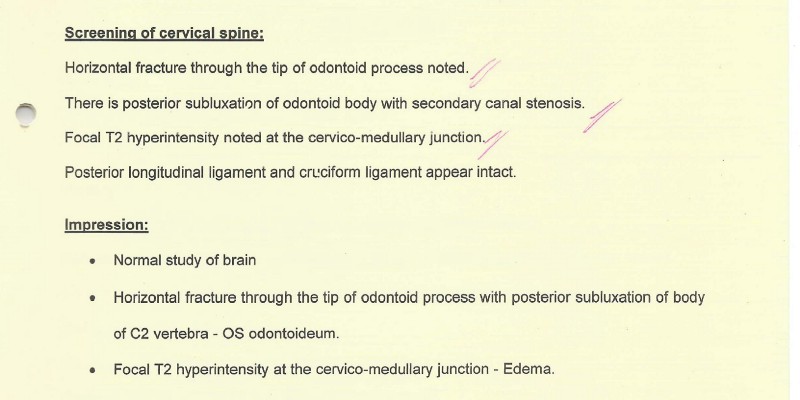 MRI report of spine
MRI report of spine
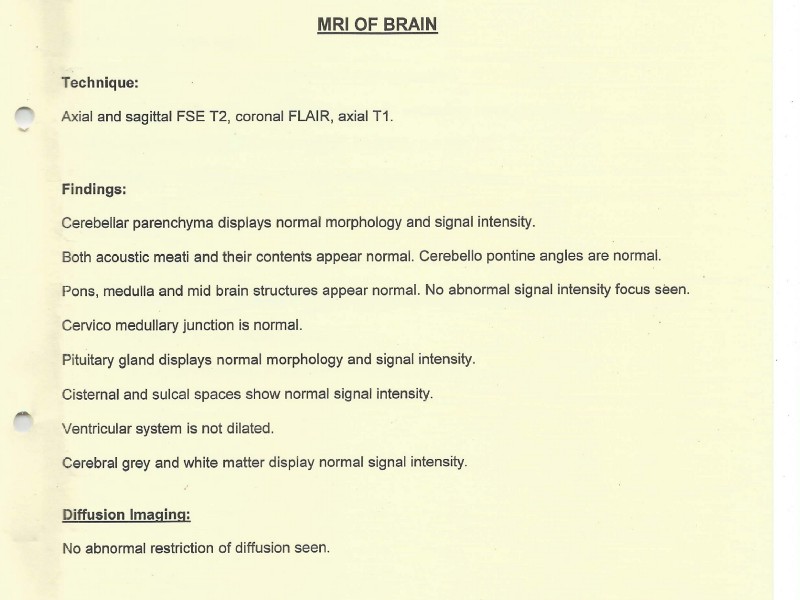 MRI report of brain
MRI report of brain
I was told that my pain in the head & tingling sensation could have been due to the anomalies with the spine & was referred to an orthopedic surgeon immediately.
The orthopedic surgeon advised to consult a spine surgeon as leaving spinal stenosis untreated would result in me becoming quadriplegic and surgery is the only way forward to get it treated.
I consulted multiple spine specialists & their diagnosis was same, that I should get operated soon to address the condition or risk 100% paralysis on all 4 limbs.
Odontoid fracture
Odontoid is the top most region in the C2 (second cervical vertebra). C1 along with C2 helps in rotational movements of the head like a wheel on the axle; aptly C2 is anatomically called axis.
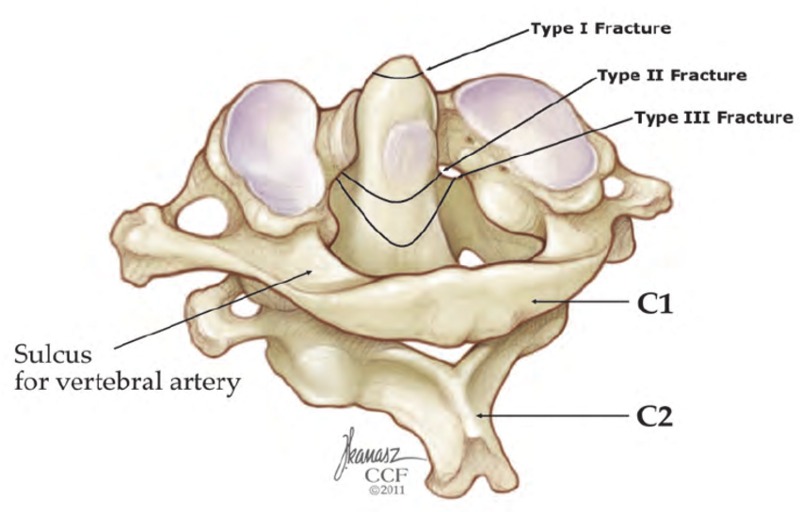 Different types of odontoid fractures. Credit : Biomechanics of the Craniovertebral Junction
Different types of odontoid fractures. Credit : Biomechanics of the Craniovertebral Junction
Though there are different types of odontoid fractures with varying levels of severity, medical community largely agrees upon three major classifications of the same.
My fracture being in the tip of the odontoid fracture, would be Type-I; a rare but relatively less severe fracture in general. I was told that due to the distance by which the bone fragment had traveled in my case; the fracture by itself would need surgery to be fixed.
Spinal Stenosis
Narrowing of the spinal canal resulting in the pressure on the nerves is called spinal stenosis. If it occurs in the cervical region (neck) as in my case, it is cervical stenosis & if it occurs in the lumbar region (lower back) it is lumbar stenosis.
I would focus this writing on cervical stenosis, but lumbar stenosis is a common occurrence which affects legs & so movements; I plan to undergo tests for lumbar region soon & will update when it happens.
 Cervical Stenosis. Credit: Healthwise
Cervical Stenosis. Credit: Healthwise
Apart from the orthopedic surgeon, multiple expert spinal surgeons confirmed the necessity to get operated for this condition & the risk of paralysis if left untreated.
CT scan report confirmed the earlier findings and mentioned the dimensions of the spinal canal.
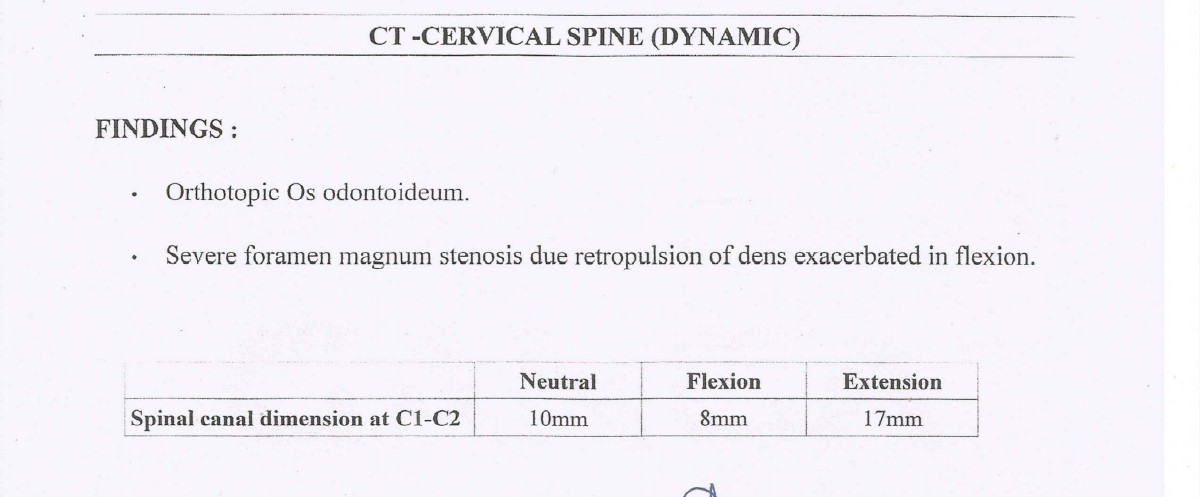 CT scan report of the cervical spine
CT scan report of the cervical spine
Cause
About 15 years back when I was 15, last of my Ilizarov limb straightening surgical procedures were carried on. The reason being, my legs started bowing again as it did when I was about 7 years old; Ilizarov procedures were carried upon then as well.
Ilizarov apparatus is an external device which by planned fractures to the bones with regular manual screw adjustments helps with straightening, lengthening & even better union (joining fractured bones).
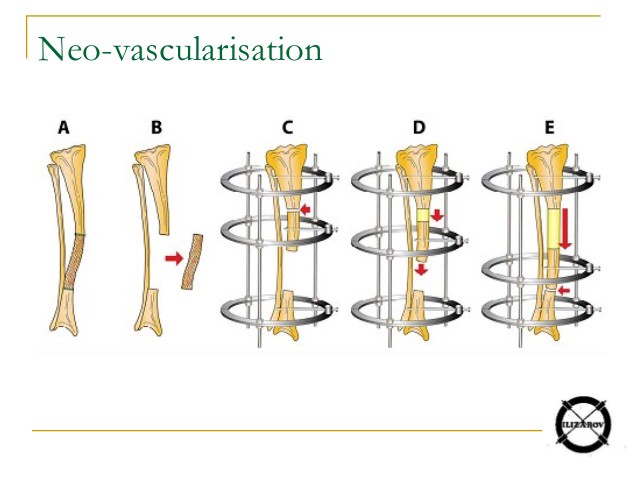 Limb straightening using Ilizarov apparatus. Credit : Dr. Abdullah Mamun
Limb straightening using Ilizarov apparatus. Credit : Dr. Abdullah Mamun
Achondroplasia
By the time I got operated again for limbs when I was 15, it was clear that my height has been stunted since the first surgery at 7; but I was assured by the doctor that I would grow up-to at-least 5.5 feet. I’m now at 4.5 feet.
The orthopedic doctor who treated me till I was 15 didn’t diagnose my condition as achondroplasia at that time, either due to blatant oversight or the symptoms of condition weren’t clear at that time, though unlikely.
The doctor who performed Ilizarov surgeries, was the 4th or 5th Orthopedic doctor my parents consulted for me. He trained directly under Ilizarov himself & my treatment was conducted in ‘the best’ hospital in India which gets patients around the world where he was the chief Orthopedic.
Considering the above, my parents were satisfied to hear his diagnosis that I’m a normal kid & would grow taller than my dad (5.3") [Something which any parent would like to hear].
Now, looking back; he might have lied; It wouldn’t be a surprise as he’s definitely corrupt — He demanded ~ 1500 USD as un-accounted money the day before surgery (at both times) while working in the most expensive hospital in India at that time.
Achondroplasia is a mutation of FGF3 gene resulting in a common form of dwarfism characterised by shortened limbs.
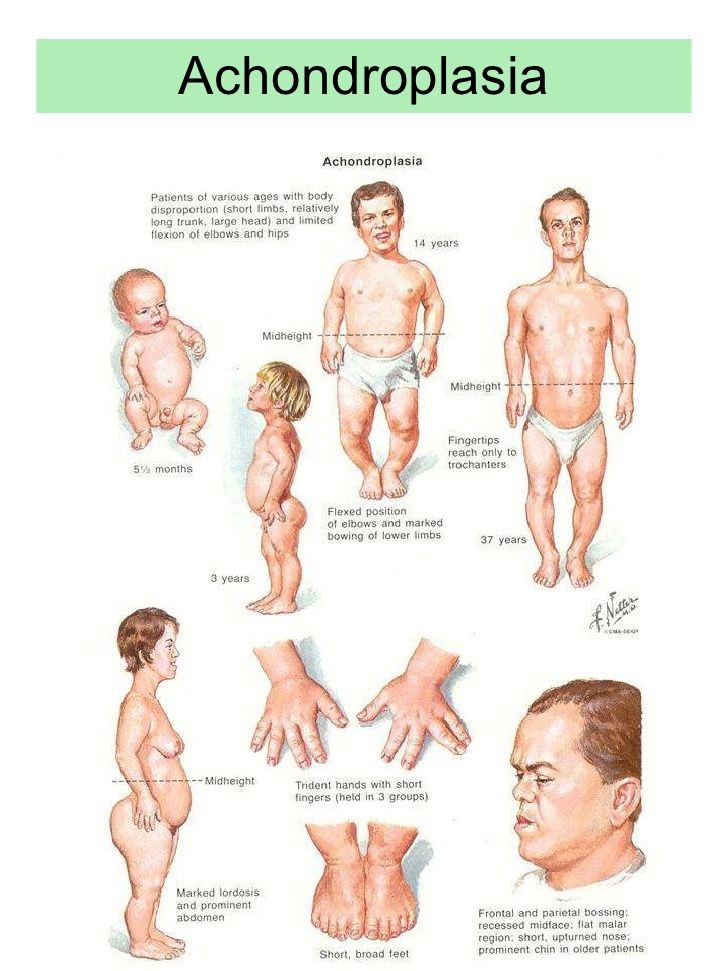 Achondroplasia. Credit : unknown
Achondroplasia. Credit : unknown
I was told by my spine surgeon that spinal anomalies are of common occurrence with patients of Achondroplasia as we strain our necks to look up through out our life.
Osteoporosis
During my final checkup with my orthopedic doctor about 18 years back, I was told that my calcium & vitamin D levels were low based on Bone Mineral Density test. I was asked to take on supplements for the same, which I did for about 2 years and discontinued it on my own fearing it’s repercussions on kidney.
Fast forward now, with spinal anomalies; I wanted to take the BMD test again. My current bone BMD reports revealed dangerously low levels of density leading to osteoporosis & osteopenia with high risk of fractures.
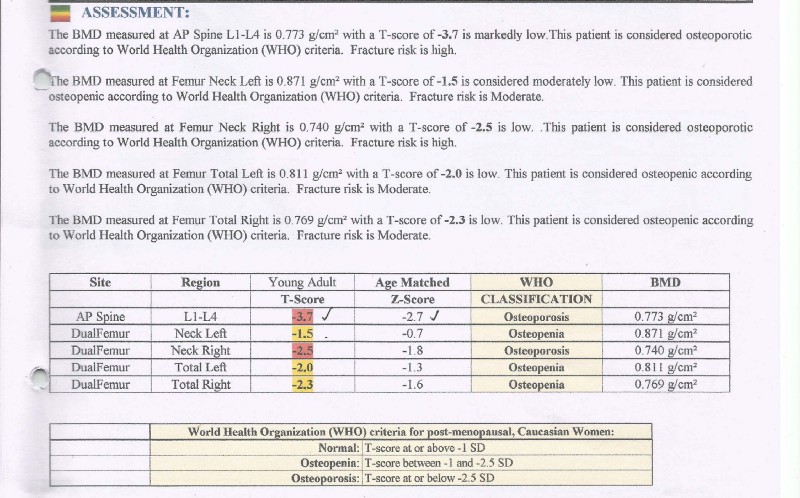 Bone Mineral Density report
Bone Mineral Density report
Studies show low bone mineral density in achondroplasia.
I’m now on Calcium, Vitamin-D3 supplements along with Zoledronic acid intravenous treatment to address osteoporosis. Though this has complicated the treatment for spinal stenosis, it’s now being treated separately by an endocrinologist.
Lifestyle
Unlike first 15 years of my life, I haven’t been on any medical treatment for the past 15 years; until now.
Besides obvious short-comings (pun intended), I was physically very active. Exercises including pull-ups, walking 1 Km to & from the office every day were part of my routine. I wonder whether I overdid it to compensate for the pain from osteoporosis.
Burn outs were regular, as an entrepreneur I attributed it to being single founder of an ambitious startup taking care of management, leadership, finance & of-course technology.
Though I don’t attribute my lifestyle choices directly to my present medical conditions, failure to asses my conditions at an earlier stage though it’s questionable on whether it could have made any difference is an outcome of my lifestyle.
Treatment
Every expert I consulted regarding the spinal stenosis suggested surgery as the immediate course of action.
Surgery
I decided to undergo **C1-C3 fusion **which would fuse cervical vertebrae 1 & 3 using **permanent titanium screws **& donor bones. Apart from supposedly curing the cervical stenosis, it would preserve the lateral rotational movements of the neck (looking left & right) to some extent.
Due to the physical limitations brought upon by this surgery, I would loose the ability to look up & down to the chest (flexion, extension). I was also repeatedly informed that due to the complexity of the surgery, it would be **life threatening **to undergo it.
Since, not opting for surgery means risking imminent paralysis; I decided to go ahead with it.
Surgery was conducted for about 3–4 hours using intra-operative CT navigation. The surgery was largely successful, except for right C2 pedicle screw being differed due to high riding vertebral artery.
 C1-C3 fusion X-ray taken couple of days after the surgery
C1-C3 fusion X-ray taken couple of days after the surgery
Post-Surgery
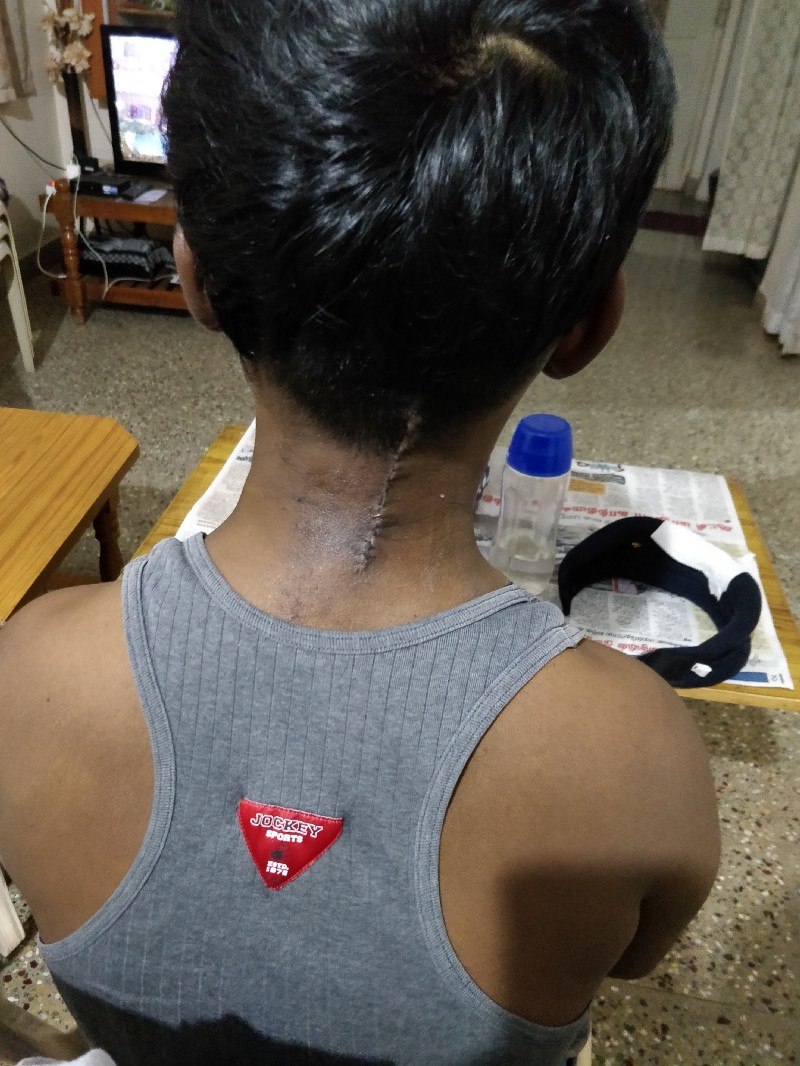 14 days since surgery
14 days since surgery
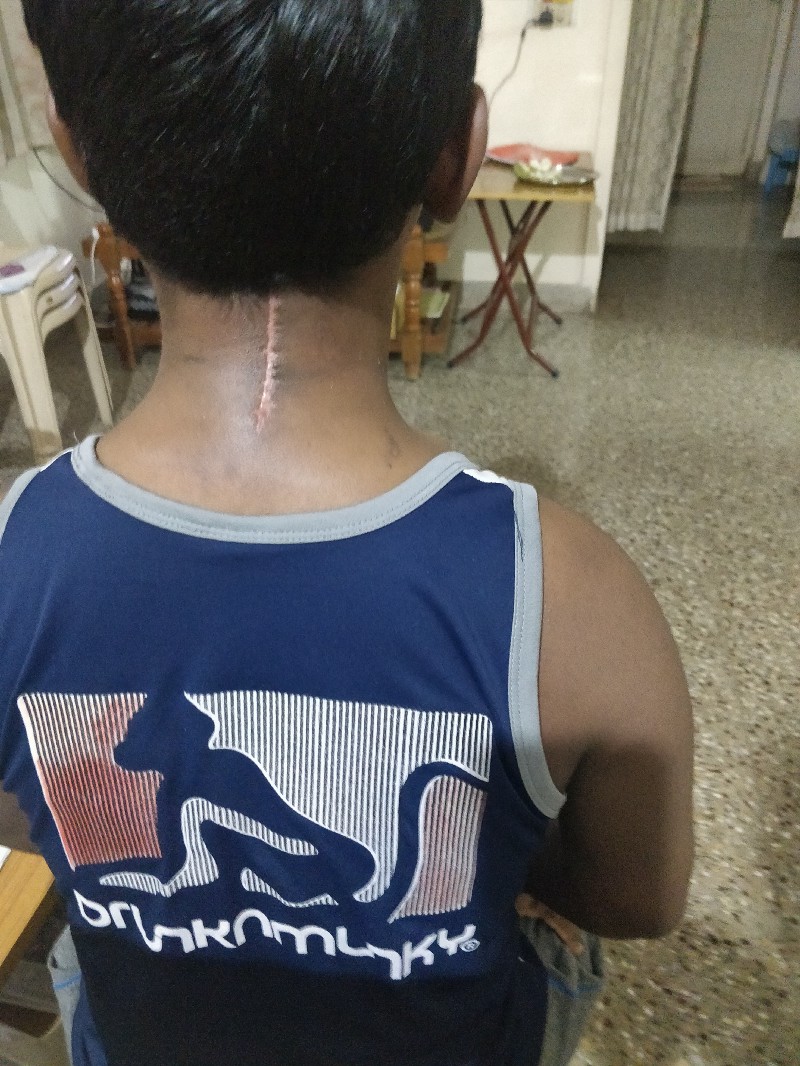 54 days since surgery
54 days since surgery
I was made to walk incrementally 4 days after surgery & was discharged in 10 days. I was reminded to be extremely careful for next several months and to avoid any activities which could affect the recovery like bending, flexing etc.
Pain is manageable, but I wouldn’t dwell too much into it as pain is subjective & It’s not my first time in such situation; I didn’t subsist on pain-killers either.
Apart from obvious neck-stiffness, which is likely to be permanent; back side of the head is numb from several nerves being cut for surgery.
The sutures were of dissolvable type, not that the visible scars being my concern.
I was given Sternal-Occipital-Mandibular Immobiliser (SOMI) Brace to wear full-time except during sleep; at which I had to wear a soft collar.
After a month, SOMI brace was replaced with Philadelphia collar; partly on my insistence as the SOMI brace were a sore on my shoulders.
There’s risk of bacteria or other microbes forming a bio-film over any permanent implants leading to infections; research is underway by medical engineers to address this issue.
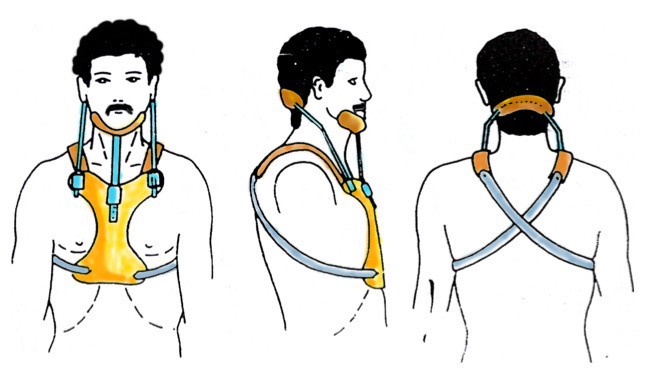 SOMI Brace. Credit : youngorthopod
SOMI Brace. Credit : youngorthopod
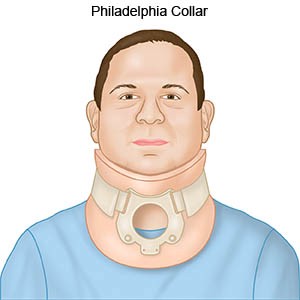 Philadelphia Collar. Credit : drugs.com
Philadelphia Collar. Credit : drugs.com
Accessbility
Due to the restriction of neck movements, there are major accessibility issues during recovery & post-recovery due to some of the permanent restrictions detailed above.
Though there were some major accessibility hurdles with regard to computation during bed-rest; I’ll document it another time for the sake of brevity. Now that I can manage to sit, I could type using wireless keyboard on my lap albeit from muscle memory as looking down at the keyboard is not an option anymore to me.
Like wise, walking, climbing stairs etc. needs to be done with extra precaution as the hurdles in the path isn’t visible anymore & my peripheral vision needs to work overtime. Falling down now would not only be dangerous owing to my spinal surgery but, also due to high risk of fractures from osteoporosis.
Key Takeaways
- Wrong diagnosis or not diagnosing my condition as achondroplasia by the paediatric & orthopaedic doctors who treated me when I was child have created life threatening scenarios.
- Achondroplasia is prone to loss in bone mineral density & spinal stenosis.
- Achondroplasia should be treated as a chronic illness, treating with cosmetic surgeries alone like Ilizarov limb lengthening & straightening is not the solution.
- Though achondroplasia being one of the oldest recorded genetic defects, its correlation with other bone related diseases are still not known among even expert medical professionals; not to mention there’s no cure for achondroplasia yet.
- Bone unlike other organs, doesn’t necessarily show signs of failure until catastrophic failure (fractures). Full body medical check ups generally ignore bone health checkup, insist on a BMD test.
- Stopping calcium & vitamin-D supplements on my own was a grave mistake, but to cut some slack - I was starting my Engineering course; starting of my life outside hospital & I felt healthy. It wasn’t like the doctor had detailed any supplement plan nor I was informed of the potential consequences.
- Surgery being the only cure to prevent becoming quadriplegic in the cases of severe cerebral stenosis.
- C1-C3 fusion though preserving rotation movements to some extent, limits flexing & extension movements for life-time. Risk of microbial infections over the implants is note worthy.
- Lifestyle changes are needed to address the accessibility issues resulting from C1-C3 fusion.
Why document, what’s next
I wish someone had warned about the potential consequences of achondroplasia, hence I’m documenting my conditions for posterity.
Due to the technical challenges involved, data on C1-C3 fusion for spinal stenosis seems to be very limited.
I’m winding down operations at our startup & trying to sell our products to interested companies; to focus on physical & mental health.
Update : This is on HN front page, it contains comments from quadriplegic DYI hackers to discussions on the content of this article.
Update May 2019
It's going to be a year (July) since my spinal surgery happened, here are some updates.
Accessibility
I would say there's about 30%-50% loss in neck movements in total combining all axis of rotation. This is much better than what I anticipated.
To give a perspective, for a stranger speaking to me by facing me at 1 metre at angle of 45˚ to 135˚ wouldn't notice anything wrong with my neck. Beyond that, perhaps I could move 15˚ more at either side with some strain.
Tingling & Numbness
There's no tingling in the face as it was before the surgery.
There had been numbness in the right hand during sleep post-surgery, strong enough to wake me up in the middle of the sleep. This hasn't happened before the surgery to the best of my knowledge. Perhaps since I spent most of my time in bed during my recovery, I had noticed this.
The issue with Tingling & Numbness in hands is that it can occur for number of reasons including Anxiety, Deformities with hand leading to pressure on the nerves, Spinal issues; unfortunately I had reason to believe that I had all of them. Medical tests for the source of numbness in my right hand didn't yield any results.
I had noticed the pattern that this occurs mostly when I'm asleep and it occurs mostly with my predominant right hand. Searching for data on this lead to instances where this occurs when someone sleeps on the side causing pressure on the nerves in the hands. Physiotherapists suggest better sleeping positions with pillows & wearing wrist splint.
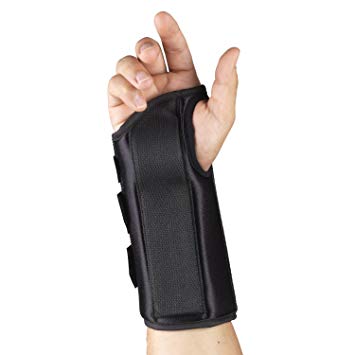 Wrist Splint. Source : Amazon (Representation only, I didn't buy this particular product).
Wrist Splint. Source : Amazon (Representation only, I didn't buy this particular product).
Wearing Wrist Splint made huge difference, suggesting it is my sleeping position which is causing this issue. Then again, I didn't face this (or notice this) pre-surgery; perhaps because I used to sleep on flat surfaces before surgery (it helped with back pains after long working hours).
Now I'm consciously avoiding pressure to the right hand while sleeping and have started to sleep again on flat surface, this seems to have helped controlling the numbness in the hand to the extent that it doesn't bother me.
Bones
I'm continuing with my bone strengthening medications, the treatment of which is separate from my spine treatment.
Lifestyle
I have closed my company after helping my employees get good offers from other companies and after returning the investments to my investors. Besides the significantly cumbersome closure process (India!), I'm now free from company affairs to focus on my health.
I'm now building startup content & tools required by startups irrespective of the ecosystem they're located in. But being careful that my work doesn't override my health as it did when I was a single, full-time executive of my previous company.
As far as my physical health is concerned walking, core strengthening & sleeping are the regular activities I conduct.
For mental health, focus or 'Mindfulness' as it is commercially called is helping me.
Newsletter
I strive to write low frequency, High quality content on Health, Product Development, Programming, Software Engineering, DIY, Security, Philosophy and other interests. If you would like to receive them in your email inbox then please consider subscribing to my Newsletter.